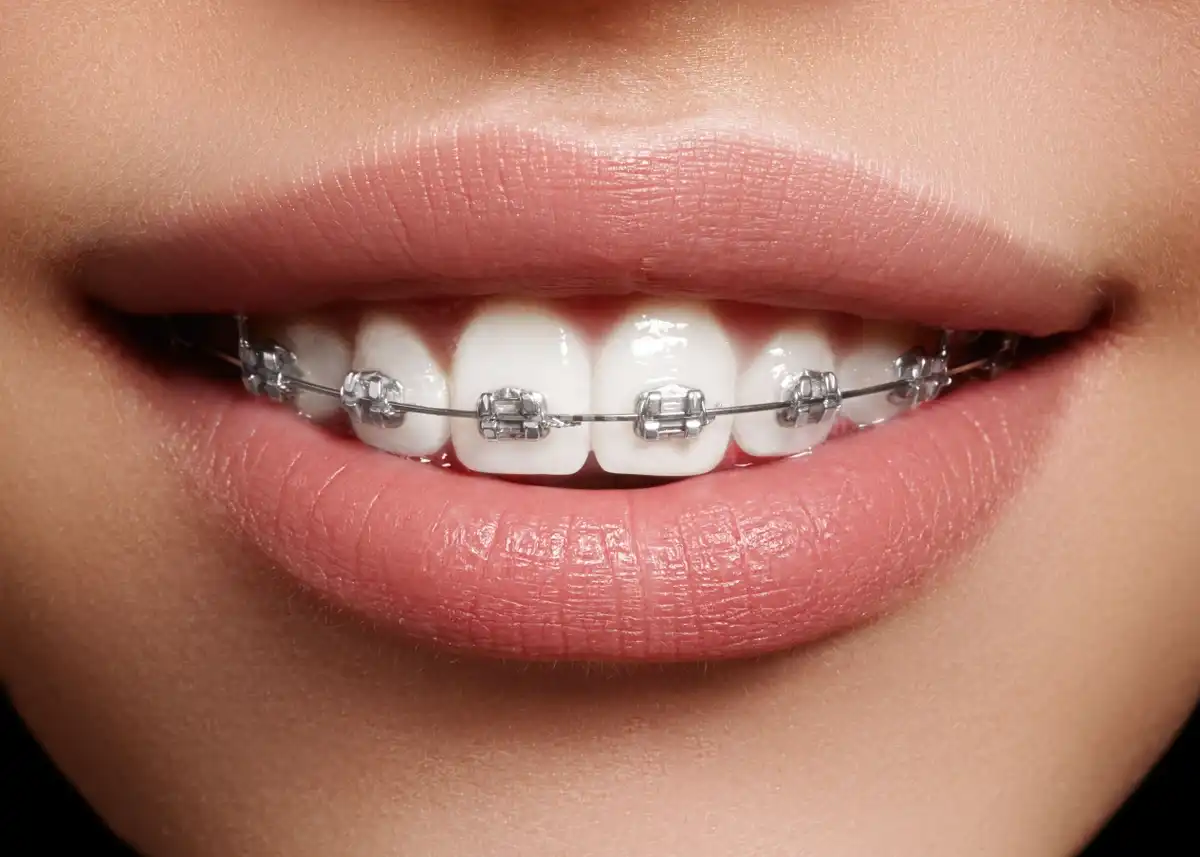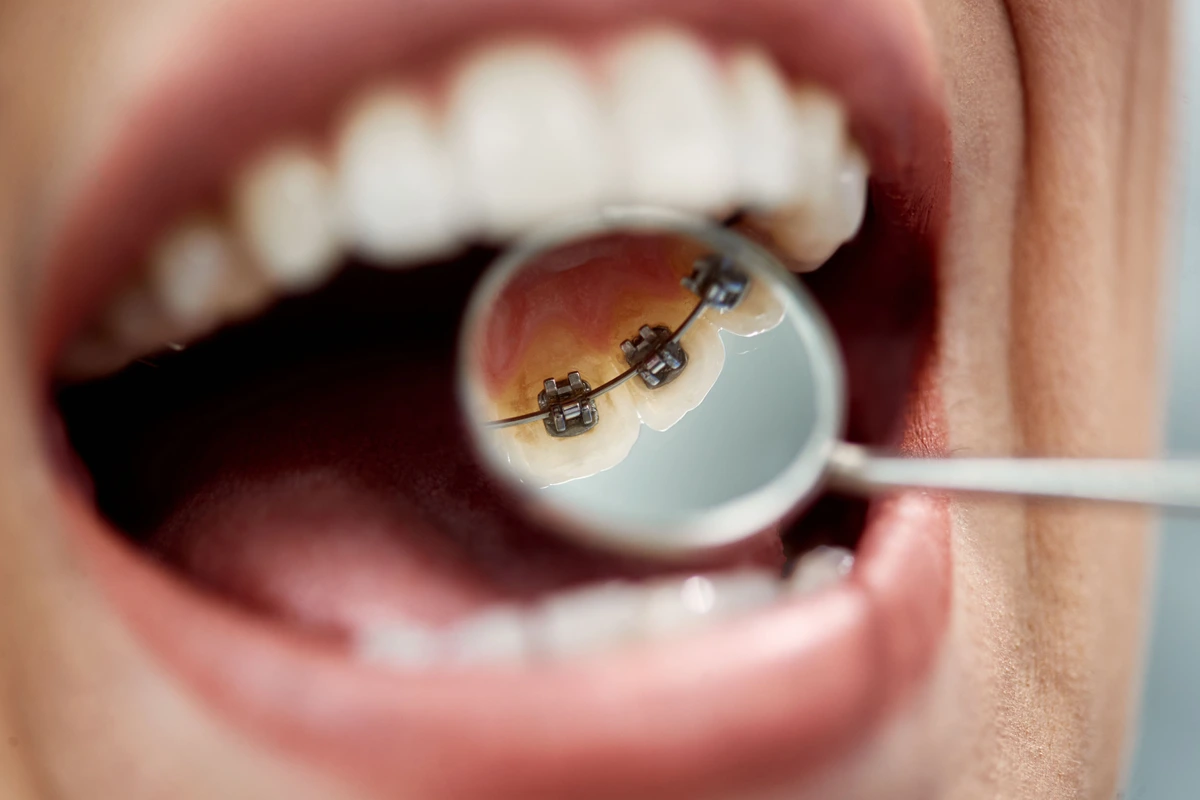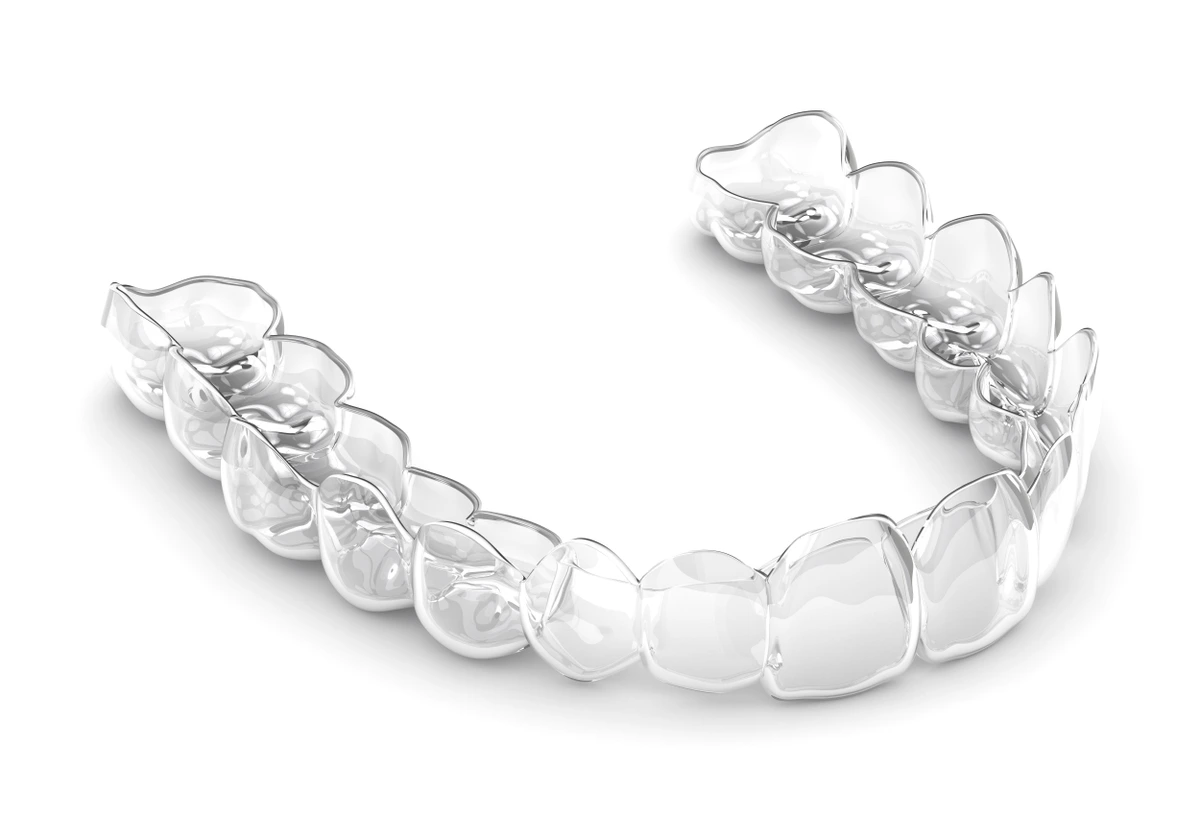How Much Do Braces Cost? Affordable Options for 2024

In this article, we may include products or services we think are useful for our readers. If you buy through links on this page, we may earn a small commission to help fund our mission to create more healthy smiles. Here’s our process.

If you’ve ever contemplating orthodontic treatment for yourself or your child, your #1 question is probably, “How much do braces cost?” You might even get frustrated by calling around to different dental or orthodontist’s offices asking about braces cost in your area because they can’t give you a clear-cut answer over the phone. Trust me, they’re not trying to pull one over on you! Here’s what you need to know…
Are Braces Worth It
First and foremost, braces cost can depend on the extent of physical correction that’s needed to create a healthy bite. If you have pretty significant crowding or gaps, it takes longer to correct your occlusion (the way teeth bite together.) People with straighter teeth tend to have better oral health, so investing in orthodontic correction isn’t just for cosmetic concerns. Braces also boost your level of dental wellness. Regardless of braces cost, braces treatment will have a positive investment in your oral health.
Risks If You Pass On Braces
Crooked or misaligned teeth are harder to clean and more prone to collect buildup. Even the way those teeth bite against their partner can have long-term effects like irregular tooth wear and joint pain.
Statistically speaking, people with crowded or crooked teeth are more likely to experience:
- TMJ disorder
- Broken or worn teeth
- Fractured dental work
- Higher rates of tooth decay
- Periodontitis (gum disease)
By improving the position and alignment of each of your teeth, you can optimize the way your jaw functions each time you chew. The healthier biting relationship also minimizes the chances of atypical wear points on your tooth enamel. Plus, straighter teeth are just easier to keep clean with brushing and flossing, because there aren’t extra spaces that are challenging to reach.
Print out the checklist below and check off each step on your teeth straightening journey!

Factors That Affect Cost Of Braces
So now that we’ve established that braces are just as much of therapeutic treatment as they are to improve your smile, there are other things to consider before you nail down braces cost for you or your child.
How much are braces in general? It will depend on these four key factors:
1) Location
The cost of living in your area plays a big part in dental and braces costs near you. If housing and rent are higher in that location, dental and braces costs will be too.
2) Type Of Braces Required
Certain types of orthodontic appliances or braces cost more than others. The good news is that some of the popular brand pricing has come down over time.
3) Length Of Treatment
This is a big one. Most braces pricing quotes will boil down to how long you require orthodontic treatment. The length of time you spend on appliances or the number of trays you need directly impacts the total price for your orthodontic therapy.
4) No Health or Dental Insurance
If you have a dental insurance plan that covers orthodontic therapy, it could cut your braces cost by about half or more, depending on your coverage.
4 Main Types Of Braces
Aside from the length of treatment, the type of orthodontic therapy you choose is perhaps the most important factor when it comes down to the “how much do braces cost?” discussion. Although there are several different choices on the market, here are the four main types of braces that are the most popular:
1) Traditional Metal Braces
2) Ceramic Braces
3) Lingual Braces
If you want completely invisible braces, lingual braces are a great choice. They’re called “lingual” braces because they’re on the lingual (tongue-side) surfaces of your teeth, hidden from the eyesight of everyone else. But since they’re bonded on the back of your teeth, they’re customized for optimal comfort, which increases the braces cost compared to traditional orthodontics.
4) Clear Plastic Aligners
Translucent aligner brands like Invisalign, ClearCorrect, and similar systems use a series of translucent trays to move your teeth. With many different options on the market nowadays, clear braces costs are much more affordable than they used to be—with some systems costing about the same as traditional braces—making them more accessible than ever. And when you factor into account that a lot of people get aligners for cosmetic purposes, the clear braces cost can actually save you money as part of your smile makeover process.
*WARNING* Direct-to-Consumer Aligners
Chances are, once you start doing some investigative work on how much clear or traditional braces cost in your area, you’re going to start seeing ads for direct-to-consumer aligner systems. These are braces that are sent to you in the mail without having to see any dentist or orthodontist in person. Such orthodontic systems are not recommended unless advised and supervised by your dental provider. There are just too many risks to mention.
The Average Cost Of Braces By Type
Braces typically cost between $3,000 and $12,500, varying based on treatment complexity and materials. Your orthodontist can suggest affordable options that align with both your budget and oral health requirements.
| Type of Braces | Average Cost No Insurance | Average Cost With Insurance | Average Cost With 1Dental |
|---|---|---|---|
| Traditional Metal braces | $3,000 to $7,500 | $1,750 to $4,000 | $2,400 to $6,000 |
| Ceramic braces | $3,000 to $8,000 | $2,000 to $4,500 | $2,400 to $6,400 |
| Lingual braces | $5,000 to $12,500 | $3,500 to $10,000 | $4,000 to $7,200 |
| Clear Plastic Aligners | $3,000 to $7,000 | $1,500 to $3,500 | (not covered) |
| *Direct-to-Consumer Clear Aligners | $1,700 to $5,500 | (not covered) | (not covered) |
Traditional Metal Braces

Cost: $3,000 to $7,500
With Insurance: $1,750 to $4,000
Conventional hypoallergenic metal braces consisting of metal brackets and archwires.
Ceramic Braces

Cost: $3,000 to $8,000
With Insurance: $2,000 to $4,500
Tooth-colored orthodontic appliances that blend in with your smile’s overall appearance.
Lingual Braces

Cost: $8,000 to $12,500
With Insurance: $3,500 to $9,000
“Invisible” or hidden braces, which are bonded to the back of your teeth.
Clear Plastic Aligners

Cost: $3,000 to $7,000
With Insurance: $1,500 to $3,500
Transparent, clear alignment tray systems such as Invisalign, ClearCorrect, etc.
Direct-To-Consumer Clear Aligners
Cost: $1,700 to $5,500
NOT RECOMMENDED. These are the mail-order kits that you get from online retailers without seeing a dentist
Other Ways To Get Affordable Braces
Even if you don’t have dental insurance, there are affordable ways to cover how much braces cost. Plus most health insurance plans do not offer coverage for orthodontics. Aside from getting 2-3 quotes from local orthodontists/dentists to see what options are out there, you might also want to consider:
Dental Savings Plans
Dental discount plans are great for families or individuals that are looking to save 10% to 60% on dental health care costs. Plus most dental plans have 20% off orthodontic coverage. Dental plans are nationwide with over 100,000 dentists in the program, see if you can save with a dentist near you.
Monthly Payment Plans
Most people afford their orthodontic investment by making small monthly payments. Even if you pay an initial deposit, you can finance the remaining braces cost on a month-to-month basis directly through the office or a 3rd-party dental financing lender. Most dentists or orthodontists have auto-draft options or a partnership with a private dental financing company. You might be surprised at just how low the monthly payments and interest can be!
Health Savings Account
HSAs (Health Savings Account) can cover orthodontic expenses, including braces, but require a prescription. Contributions are pre-tax, and withdrawals for qualified medical expenses are tax-free. Be mindful of annual contribution limits and check your HSA provider's terms for specifics on orthodontic coverage. Consult a tax professional for personalized advice.
Medicaid
Children who qualify for Medicaid and require braces for dental health purposes will usually be able to cover their braces cost with government benefits. Learn more about Medicaid orthodontic treatments coverage here.
What To Expect From Braces
During your initial consultation, you’ll have a chance to compare the different types of treatments available to find the one that best fits your lifestyle and schedule. Chances are, you’ll have more than just one option to choose from. Most dentists and orthodontists know that braces cost can be a barrier, so they try to help you maximize your insurance coverage or offer financing options to make the process as affordable as possible.

FAQ
How Much Do Braces Cost For Kids?
On average, most kid's braces cost somewhere between $3,000-$7,000 depending on how long the treatment is and if they’re getting multiple phases. Their dental insurance or Medicaid coverage will also play a role in total costs.
How Much Do Braces Cost With Insurance?
Depending on your plan and insurance provider, you might find that your insurance policy covers 1/3 to 1/2 of your braces cost (if not more.) Your dentist or orthodontist office should be able to get a breakdown of your coverage and provide a more accurate dollar estimate as it relates to your policy.
How Much Do Braces Cost With No Insurance?
The total cost of braces is $5,991, on average, according to the American Dental Association. If you don’t have any dental or orthodontic insurance coverage, typical braces are going to start somewhere around $3,000 on the conservative side of things. But remember, most people make monthly payments.
Are Braces Painful?
Getting “adjustments” during your orthodontic treatment can cause some temporary soreness, but nothing unmanageable. If your braces hurt because of wires or brackets poking into your cheeks, be sure to have some orthodontic wax on hand and talk to your dental team.
How Much Do Braces Cost Monthly On A Payment Plan?
Depending on what down payment you make (if any) and the total braces cost for the type of system you choose, you might have monthly payments anywhere on average between $70-$159/month.
Why Are Braces So Expensive?
Compared to the conditions that braces help prevent (such as gum disease, tooth decay, TMJ disorder, etc.) getting orthodontic treatment can actually help save you money. But the cost of braces is also influenced by the price of materials and overhead expenses of your provider.
Which Is Cheaper, Invisalign Vs. Braces?
The price difference between regular braces and Invisalign has shrunk significantly over the past couple of decades. Invisalign used to be much more expensive than braces, but that’s no longer the case. Now they cost about the same amount.
Does Medicaid Cover Braces?
Medicaid coverage for braces varies by state and individual circumstances. Typically, it may cover orthodontic treatment for severe misalignment in children. Adult coverage is less common and depends on state-specific guidelines. Contact your local Medicaid office for accurate, up-to-date information on coverage in your area.
Get An Exact Price Quote On Braces
The best way to know exactly how much braces cost is to personally visit an orthodontic provider for an assessment. A lot of specialists provide complimentary consultations, which give you more than enough information on pricing and length of treatment! To truly answer the question, “How much do braces cost?”, you’ll need a face-to-face visit with your dentist or orthodontist. Find a dentist near you->

Make your inbox smile!
Subscribe





